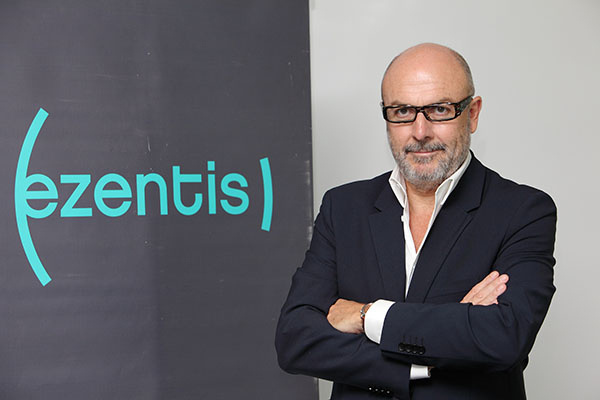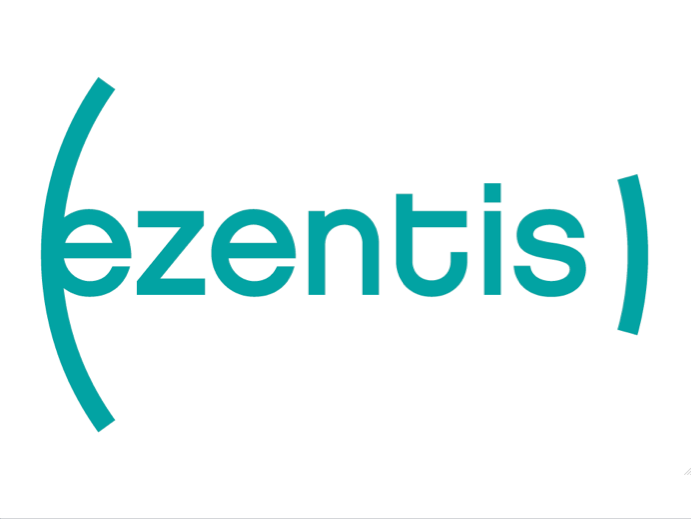When talking with Manuel García-Durán, president and CEO of Ezentis, the pride of a manager who in just two years has managed to lead the company to become one of the most talked about turnaround stories in the Spanish market, is evident. Since taking over the firm’s reins on September 22 nd, 2011, the company’s figures have taken a 180 degree turn, and have revealed a story of courage coupled with experience. After bringing forth an Ezentis focused on the business of water, electricity, energy and telecommunications infrastructure, very oriented to Latin America, with a healthy balance sheet, a committed management team, and the ability to maintain a growth plan, both organic and inorganic, he is confident that investors around the world may find his story interesting.
“There are great opportunities for investors from all over the world, both Latin and North American or European, and both retail and institutional,” he explains. And with different risk profiles also: “For the first time, Ezentis may have a niche in portfolios with a varied risk profile, from the least to the most conservative.” He specifically stresses the case of Premaat, one of his last institutional investors, a benefit society of surveyors and architects in Spain which has a very conservative profile and remembers their milestone of the capital increase undertaken in January this year, which netted them nearly 14 million Euros.
And all, despite the volatility which those securities have suffered in the past. For now, the president believes that this year will consolidate those securities and faces 2014 with confidence, with the ultimate goal of building a stable medium-term shareholder base. Something which he believes he will achieve to the extent that the company gains visibility: Ezentis ended the semester with a record portfolio of 288 million Euros, a level similar to that contracted throughout 2012, and has a year and a half of guaranteed returns, something which is valued highly by the more conservative investors.
With this conviction of their ability to deliver value, the company will start the last quarter with a roadshow to try to attract potential investors in Latin America, where he plans to meet with about 40 investors, from local family offices to venture capital funds and which work with mid-cap technology companies.
Duplicate their Price
García-Durán does not rule out that this turnaround story may double the price of their shares from their current levels, as indicated by some analyst reports: “It would be reasonable. We have been meeting the milestones and giving evidence which lays the foundations of trust, but perception is what will drive up the share price now. There is still a fragile market but the value will tend to grow based on the good results. There’s no hurry and we understand that investors have reservations about the past, but it is more difficult to change reality than perception and we have already achieved that first part,” he says. For Garcia-Duran, an investment is like a good movie: you need a good story but you also need good direction and actors, because a good story told wrong can be bad. “We are a well-told good story and that is what the investor is looking for: companies with credible stories, which are true, executable, easy to explain and which honor their commitments,” he adds.
A Commitment to Growth
Duran’s commitment is precisely to “strictly” comply with all the steps contemplated in his strategic plan ending in 2015, and which involves inorganic growth in markets such as Mexico, Colombia and in the Brazilian city of Sao Paulo before the end of 2013. Ezentis, already present in Chile, Peru, Argentina, Panama and Jamaica, recently expanded its presence in Chile (after buying 45% of the Chilean company RDTC-of which it already owned 50% of the capital) and entered into the Brazilian marketby acquiring 60% of the Brazilian company SUL. And, the president does not rule out going into more markets in the future.
In terms of organic growth, the plan includes the renewal of their contracts in Chile (after doing the same in other markets such as Argentina) and growth in the electrical segment in Brazil, a country which he defines as “a continent within a continent”, and in which the development of infrastructure in the electricity and telecommunications sectors will be key for the future. “You can’t be a leading player in the region without being in Brazil. Its economy has uncertainties but the history of infrastructures is not negotiable. There are no politicians who do not question the failure to grow in basic infrastructure,” he says. This is a sector in which Ezentis seeks to position itself as a partner of the large telecommunications or energy companies in a highly fragmented market.
Firmly committed to Latin America
In fact, the company is firmly committed to Latin America: if in the first half of the year, 92% of its turnover came from that region, the company forecasts that over 90% of the estimated turnover in late 2015 (around 400 million Euros ) will also come from that region. “Latin America is in its best historical moment for growth and for generating wealth transversally,” says Garcia-Duran, noting that at the level of economic growth there is currently more uncertainty in Europe and pointing out the “unstoppable race to generate basic infrastructure,” a story which involves Ezentis.
The obverse and the reverse
But when Garcia-Duran took over the management of the company, it was not the only story in which he participated. His legacy was that of a company involved in shareholdings’ wars, in a complicated situation, and an amalgam of unrelated businesses which the president defines as a real “chaos”. Duran could see the “real value” of several companies which Ezentis had in Latin America, and which he considered “crown jewels”, and the possibility of good management of its assets and liabilities. Thus, after paying several debts and dealing with creditors, he conducted a process for the sale of non-core businesses to focus on their core business, which also helped to stabilize the company and reduce the ratio of debt to EBITDA, from 15 times, down to their current rate which stands at around 2.
A restructuring process which ended last August with the completion of the debt restructuring, and also with the total sale of Amper and after changing their participation in Vertex to non-strategic. Another milestone achieved was the creation of a team in which the first shareholders are company executives, which works in favor of consolidating their confidence in both their project and reputation.



 For Fórmate a Fondo
For Fórmate a Fondo

